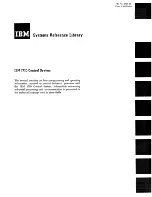
19 / 28
653, 654
12.3.3 Mounting a
convex diaphragm
1. Move bonnet
A
to the closed position.
2. Place the compressor loosely on the
bonnet spindle, fit
A
into
B
and
D
into
C
(see chapter 12.3.1 "General
information").
3. Check if the compressor fits closely in
the guides.
4. Invert the new diaphragm face manually;
use a clean, padded mat with bigger
nominal sizes.
III.
I.
II.
Diaphragm face
Diaphragm pin
5. Position the new backing diaphragm
onto the compressor.
6. Position the diaphragm face onto the
backing diaphragm.
7. Screw diaphragm face tightly into the
compressor manually. The diaphragm
boss must fit closely in the recess of the
compressor.
Diaphragm boss
Recess of compressor
Com-
pressor
Adapter
Backing
diaphragm
Diaphragm face
Diaphragm pin
8. If it is difficult to screw it in, check the
thread, replace damaged parts.
9. When clear resistance is felt turn back
the diaphragm anticlockwise until its bolt
holes are in correct alignment with the
bolt holes of the bonnet.
10. Press the diaphragm face tightly onto
the backing diaphragm manually so that
it returns to its original shape and fits
closely on the backing diaphragm.
12.4 Bonnet mounting
on the valve body
1. Move bonnet
A
to the closed position.
2. Open bonnet
A
approx. 20 %.
3. Position bonnet
A
with the mounted
diaphragm
2
on the valve body
1
, take
care to align the compressor weir and
valve body weir.
4. Tighten bolts
18
, washers
19
and
nuts
20
by hand (hand tight only)
(fastening elements may vary dependent
on diaphragm size and / or valve body
version).
5. Fully tighten the bolts
18
with nuts
20
diagonally.
6. Ensure that the diaphragm
2
is
compressed evenly (approx. 10-15 %,
visible by an even bulge to the outside).
7. Check tightness of completely
assembled valve.
Important:
Service and maintenance:
Diaphragms degrade in the course
of time. After valve disassembly /
assembly check that the bolts and
nuts on the body are tight and
retighten as necessary (at the very
latest after the first sterilisation
process).










































